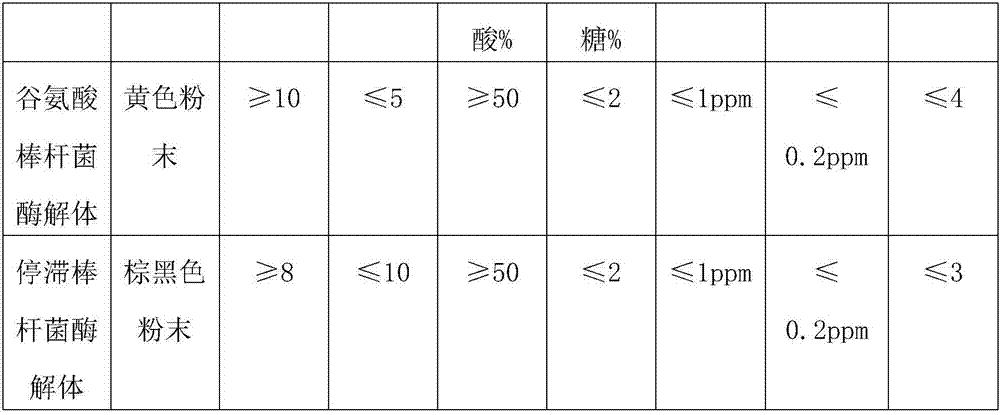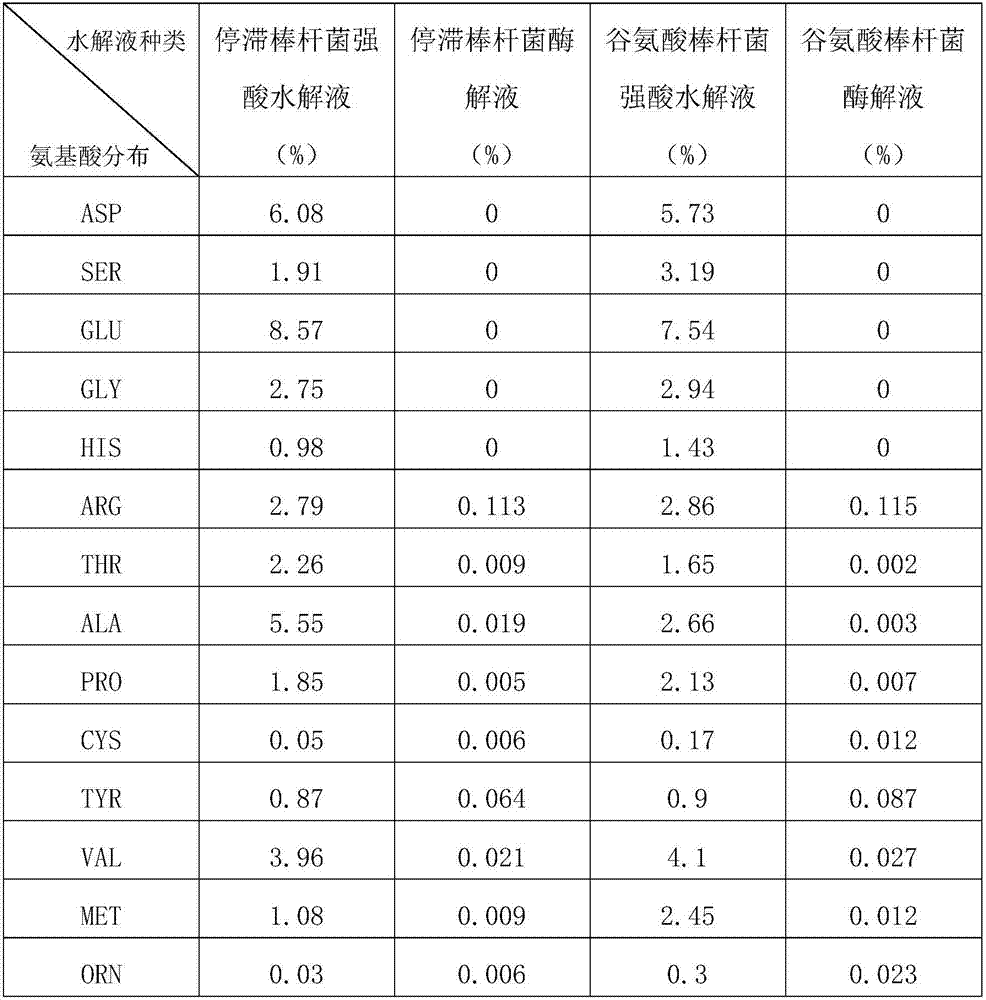Method for preparation of animal food additive from mycoprotein
A technology of animal food and bacterial protein, applied in the field of microorganisms, can solve the problems of environmental pollution and waste of resources, and achieve the effect of simple preparation method, sufficient reaction and fast speed
- Summary
- Abstract
- Description
- Claims
- Application Information
AI Technical Summary
Problems solved by technology
Method used
Image
Examples
Embodiment 1
[0017] Take 300g of dried bacteria, dilute to 2L with water, and stir evenly. Adjust the pH to 2.0, mechanically stir at 210r / min, and autolyze at room temperature for 2 hours. After the bacteria residue liquid has a uniform texture and no agglomerated coagulation or sediment, adjust the pH to a weak acid or neutral 6.5-7.0. Add 0.1% (w / v) taurine and 0.08% (dried bacteria residue) compound protease (the mass ratio of papain, yeast extractase, and peptidase is 5:2:1), and adjust the temperature to 58 degrees Celsius. The stirring speed was 150 r / min, and the pH of the solution during the reaction was maintained within the range of 6.5-7.0 by adding 4 mol / L hydrochloric acid solution. After 8-9 hours of enzymolysis reaction, the temperature is raised to 85-90 degrees Celsius and maintained for 2 hours. Cool down to 55 degrees Celsius, add 2% (dried bacteria residue) calcium citrate and 0.7% (dried bacteria residue) citric acid, and mix evenly for 1 hour. Concentrate the reac...
Embodiment 2
[0030] The steps are: take 2L of fresh fungus residue liquid concentrated to 15% solid content, and stir evenly. Adjust the pH to 2.0, mechanically stir at 210r / min, and autolyze at room temperature for 2 hours. After the quality of the waste liquid is uniform and there is no agglomerated coagulation or sediment, adjust the pH to weak acid or neutral (6.5-7.0). Add 0.1% (w / v) taurine and 0.08% (dried fungus residue) compound protease (the mass ratio of papain, soybean meal hydrolase, and flavor enzyme is 3:2:3), and adjust the temperature to 58 degrees Celsius. The stirring speed was 150 r / min, and the pH of the solution during the reaction was maintained within the range of 6.5-7.0 by adding 4 mol / L hydrochloric acid solution. After 8-9 hours of enzymolysis reaction, the temperature is raised to 85-90 degrees Celsius and maintained for 2 hours. Cool down to 55 degrees Celsius, add 2% (dried bacteria residue) calcium citrate and 0.7% (dried bacteria residue) citric acid, and...
PUM
 Login to View More
Login to View More Abstract
Description
Claims
Application Information
 Login to View More
Login to View More - R&D
- Intellectual Property
- Life Sciences
- Materials
- Tech Scout
- Unparalleled Data Quality
- Higher Quality Content
- 60% Fewer Hallucinations
Browse by: Latest US Patents, China's latest patents, Technical Efficacy Thesaurus, Application Domain, Technology Topic, Popular Technical Reports.
© 2025 PatSnap. All rights reserved.Legal|Privacy policy|Modern Slavery Act Transparency Statement|Sitemap|About US| Contact US: help@patsnap.com



